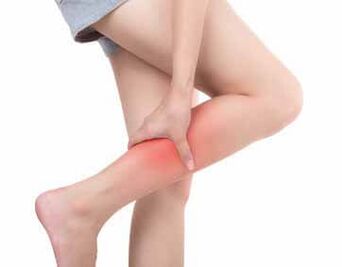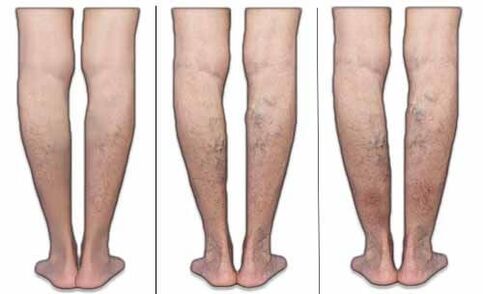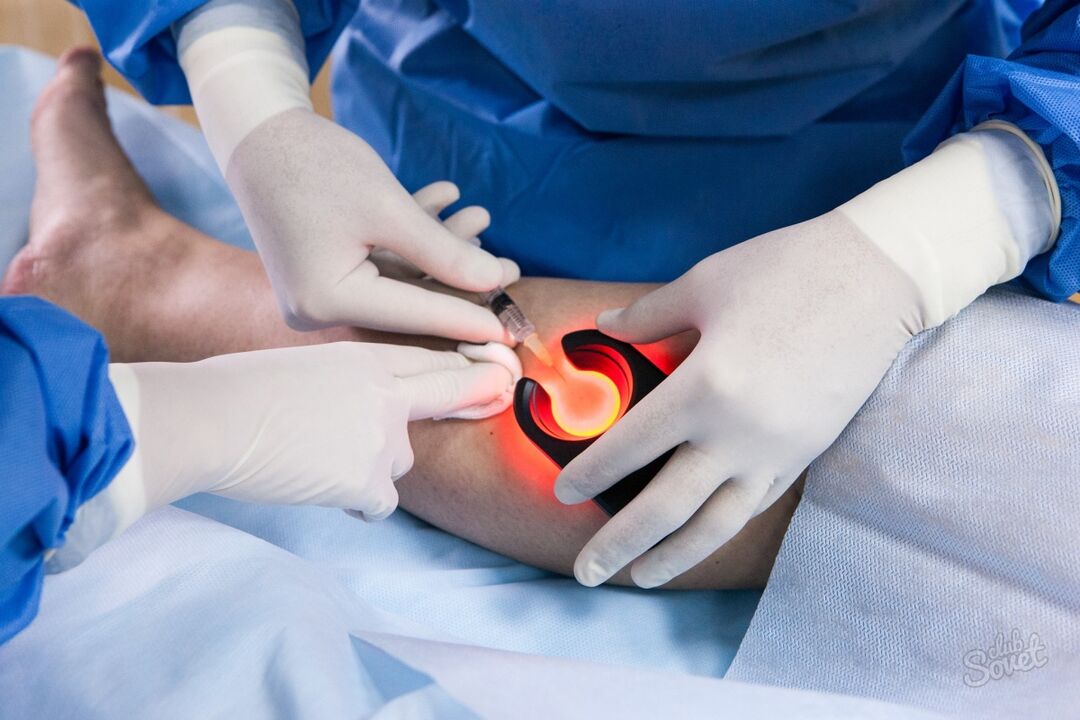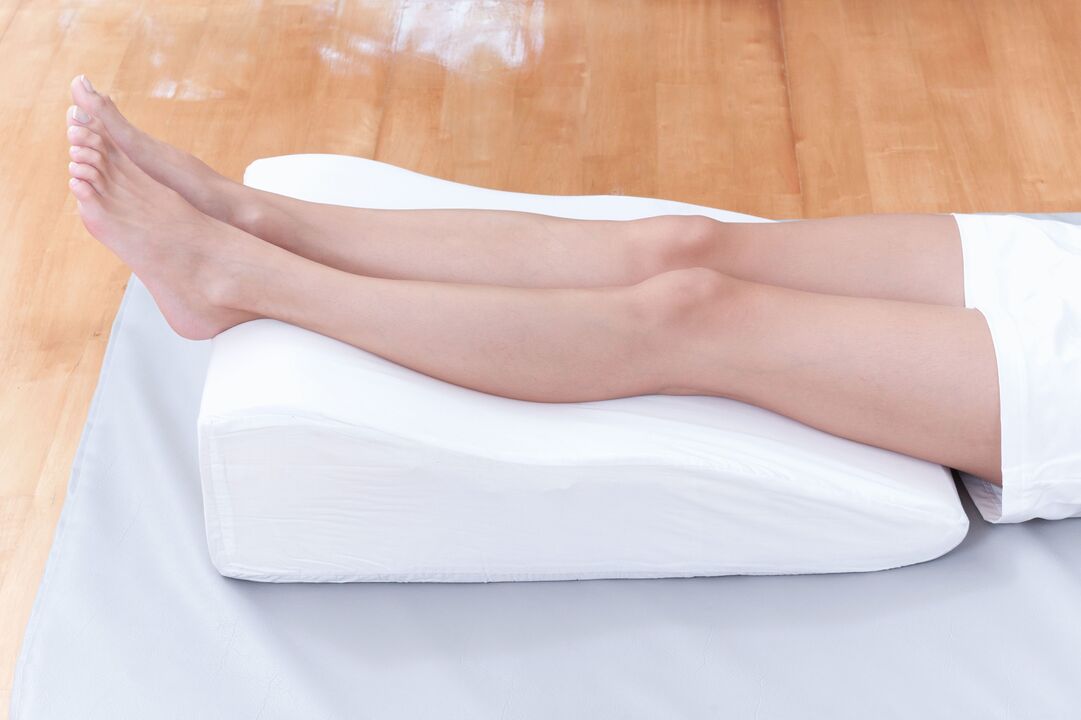Varicose is a systemic disease that can affect the vessels in any part of the body. Its essence is the dysfunction of the valves that control the direction of blood flow. Therefore, there is an accumulation of an excessive volume of fluid in the veins, under the influence of which the walls extend and lose their elasticity.

Most often, medical publications focus on the symptoms and treatment of varicose veins on the legs, as this variety of disease is considered to be the most common: according to statistics, more than 80% of all cases of varicose veins are right on the lower limbs. However, for most patients, the diagnosis of varicose veins is a surprise and its discovery occurs in the short stages. All this shows insufficient awareness of people about the dangers of varicose veins.
Characteristics, causes and mechanism of the development of varicose veins
The main characteristic of varicose veins of the legs is its vastness. The changes are subject to surface and deeply working veins of large length. Because there is a very large and long load on the legs, the valves in the circulatory system can begin to weaken in childhood. Therefore, the discovery of varicose veins of the legs is common in young people and girls.
It is the lower limbs that are characterized by such a phenomenon as hidden varicose veins: against the background of pronounced changes in the veins and unpleasant symptoms there are no visible signs of the disease. Therefore, in about one third of all cases, the disease is detected in advanced stages.
In order to perform effective treatment of enlarged leg nodes, the doctor will need to find the causes of its appearance. Since even when radical methods are used in 80% of patients, recurrence of varicose veins occurs, special attention should be paid to reducing the effect on the processes of factors provoking varicose veins. These include:
- Hereditary predisposition is in fact an uncontrolled factor that can nevertheless be limited by standard preventive measures;
- Physical influences - increased load on the legs (long standing and sitting, the habit of intersecting the legs, excess weight, lifting of weight);
- Physiological effects - hormonal changes and administration of hormonal drugs (most often contraceptives), metabolic disorders, lack of physical activity;
- Pathological causes are chronic diseases of the liver, kidneys, injuries and systematic tugs of the soft tissues of the lower limbs, tumors that pressed the veins in the abdominal cavity.
Depending on the location of the veins, doctors distinguish several types of varicose veins on the feet:
- Surface. It is expressed by the appearance of a bluish or red extended grille, which first looks like a net, and then weaves on rather thick winding lines.
- Deep. It is expressed by a defeat that is not visible during an external examination of the vascular plexus. Pain in the veins of the lower limbs with enlargement of this type is more intensive, higher risk of complications.
- Combined when deep and surface veins are changed.
Creating the causes of varicose veins and eliminating it are closely related. First of all, it is important to exclude the factors that have the most negative impact on the condition of the veins.
When diagnosing venous changes, it is important to distinguish them with other diseases. For example, varicose veins below the knee look the same as the Becker cyst and are accompanied by similar symptoms.
Stages
The appearance of the first signs of varicose veins of the legs occurs at the progressive stages when venous valves perform their functions by less than 50%. At the first or zero stage of varicose veins, which is known as the "compensation stage", there is no discomfort as well as visible changes. The detection of the initial stage of varicose veins of the legs occurs with a careful examination of the limbs by the phlebologist.
In the second stage of varicose veins, which is known as "sub -mum - the changes are quite well expressed:
- The outlines of large veins are visible under the skin, but they cannot protrude above the surface of the skin;
- On the surface of the skin on the thighs and below the knees is a model of a thin extended grille of blue or red capillaries;
- By evening the legs become swollen;
- During the night, the calf muscles are narrow.
This stage of varicose veins of the lower limbs is distinguished by increasing the symptoms, which weakens after rest.
At the last stage of varicose veins, decompensation occurs: the body cannot fill the needs of the tissues in oxygen, and the valves in the veins with 90% lose their functions. The condition of the limbs is worsened due to insufficient blood supply. This stage of varicose veins is characterized by a decrease in tissue abilities to regeneration. The abundance of complications worsens the general condition of the patient. The symptoms of the last stage of varicose veins are constantly preserved.
Symptoms
The most common and early symptom of varicose veins is leg pain until the end of the working day. It occurs with a change in deep and surface vessels and is a signal of insufficiently good blood supply to the soft tissues. In some cases, pain is the only symptom of varicose veins of the deep veins of the lower limbs. With a change in the surface vessels, the appearance of varicose veins of the legs, which often creates only aesthetic discomfort, signals the development of the disease.
The nature of pain with varicose veins at different stages of the development of the disease may differ:
- At the initial stage there is a slight discomfort that resembles ordinary fatigue;
- With the progression to the second stage, a burning sensation in the legs of varicose veins appears, which is often localized below the knee;
- The pull of pain with varicose veins of the lower limbs is accompanied by 2 and 3 stages of the disease, with this, spasms of the calf muscle may occur;
- Acute pain that provokes chromium occurs at the end stages of the disease.
In addition to obvious physical discomfort, the disease is accompanied by external changes. Most patients complain that their legs scratch - with varicose veins, this is considered a normal phenomenon that shows ischemic processes. The thin extended grille, which practically does not bother in the first stages, over time protrudes more strongly, becoming a thick intertwining of thickened vessels. Any physical activity, including coughing, sneezing or long walking, can lead to a rupture of enlarged capillaries and sometimes veins. The blood is poured under the skin, forming hematomas.
The presence of bruising on the legs with varicose veins shows a stable progression of the disease, excessive stretching and thinning of the veins.
The appearance of red spots on the legs with varicose veins, peeling of the skin, thinning and exposure to injuries indicates atrophic processes characteristic of the final stages of the disease. The complications are indicated by the redness of the lower leg, which is accompanied by acute pain and the lame. Such a symptom is characteristic of phlebitis and thrombophlebitis. If the patient is blackened from the leg, this indicates a serious obstruction of the veins and the onset of necrotic processes.
Diagnostics
The ease of diagnosis of varicose veins of the legs is exaggerated as the vessels do not always come to the surface. In order to confirm the diagnosis, the doctor should conduct an external examination and conduct a number of instrumental tests:
- Duplex scanning or ultrasound of the lower limb - for varicose veins, it is first used to determine the degree of stretching of the vascular walls, the nature of the blood flow to them and the detection of blood clots;
- Radiography of the limbs with contrast - the standard of functional examination for varicose veins of the lower limbs, which allows you to determine the patency of the blood vessels;
- MRI is the gold standard of modern diagnostics of varicose veins in the lower limbs, allowing you to evaluate the functionality of venous valves, to identify outbreaks of ischemia in soft tissues, to find blood clots and other pathological changes that occur against the background of varicose veins.
In order to clarify the full picture of the disease, laboratory tests are prescribed: coagulogram to assess the risk of thrombosis, general and biochemical blood test.
Treatment characteristics
The treatment of varicose veins on the legs is engaged with a phlebologist. After determining the degree of pathological changes, the doctor chooses the most effective, according to him, methods of therapy. Unfortunately, it will not work to get rid of varicose veins on the legs forever, since the disease is systematic and even modern treatments give a long -term but not 100% stable result.
According to statistics, even after the use of radical methods for the treatment of varicose veins of the lower limbs in 80% of patients, relapse has occurred for 5 years.
In the initial stages of varicose veins of the legs, treatment is preferably conservative. Its basis is the use of local and systemic medicines:
- anticoagulants that reduce blood viscosity and improve tissue nutrition;
- anti -saigals that reduce the risk of thrombosis and improve tissue trophic;
- The venotonics to prevent further stretching of the veins, reducing inflammatory processes and swelling.
With pronounced discomfort for varicose veins of the legs, NSAIDs are prescribed. Preparing this group helps to reduce pain, preventing the development of complications.
What to do if itching for enlarged legs does not allow you to sleep, do familiar things and upset you? It is worth trying ointments or gels with a cooling effect. They will not affect the veins and will not help deal with the disease, but will quickly relieve the symptom.
In addition to conservative therapy, doctors often use methods for complex treatment of varicose veins of the lower limbs when minimally invasive and surgery are used concomitantly with medical effects. Such a scheme is used for intense symptoms and widespread venous networks. What measures to take and what to do if the varicose veins on the legs begin to progress suddenly, a phlebologist decides. At the same time, it takes into account all aspects of the development of the disease, the individual characteristics of the body and the health problems that can become contraindicated for certain procedures.
What methods are used to eliminate pathological vessels:
- Laser coagulation. It is used if the varicose veins do not pass into 2 and 3 stages, that is, in the presence of small "stars" on the surface of the skin. The method is painless and effective, but expensive. There is no 100% guarantee of treatment as the elimination of visible vessels has remained, while the causes of the disease are preserved. Apply in the early stages to eliminate cosmetic defects.
- Sclerotherapy. In thin and medium thickness, the vessels are introduced by a sclerosant, which seals the lumen of the veins, excluding it from the blood flow system. The procedure is practically painless and relatively cheap, but there are many contraindications. It is used at 1. 2 and sometimes 3 stages.
- Flbectomy is a classic excision of pathological veins by breakthroughs or cuts on the skin. This method eliminates superficial varicose veins of the thighs and lower legs. After surgery, visible scars remain, but the operation is the only effective with advanced forms of varicose veins.
Conducting surgical or minimally invasive intervention does not mean complete to get rid of varicose veins. The patient will have to visit a phlebologist regularly, take medicines to maintain the tone of the veins and wear bedding.
Contraindications
Experts attribute contraindications to varicose veins of the legs any actions that can cause additional stagnation in the vessels of the lower limbs. These include:
- Long stay in static poses;
- lifting weights;
- sitting with bending or crossing the legs.
Also, patients should avoid drinking alcohol, which helps to increase blood viscosity and weaken the walls of blood vessels. Smoking can negatively affect the course of the disease. Therefore, after diagnosing, it is necessary to abandon bad habits.
Complications
Thrombosis and inflammatory processes in the walls of the veins, mentioned earlier, are by far not the only thing that varicose veins of the legs are dangerous to the patient in terms of complications. Due to blood disorders not only the blood vessels but also the soft tissues suffer, therefore, among the effects of varicose veins on the legs, there are problems with the muscles and skin:
- dermatitis, accompanied by itching of rashes, ulceration of the skin, itching;
- eczema accompanied by cracking of the skin;
- Necrotic changes in the skin until gangrene;
- trophic ulcers;
- Muscle atrophy.
Often, with the progression of the disease and excessive stretching of the walls of the blood vessels, the patient risks encountering bleeding from varicose veins of the lower limbs. It can be closed when the blood accumulates in the muscles and under the skin and forms hematomas or open. The second option is fraught with a large amount of blood and coma, especially if the patient takes anti -agents and anticoagulants.
This complication of varicose veins of the lower limbs can lead not only to injury but also a slight physical exertion, such as coughing or sharp movement.
The most dangerous complications of the varicose veins of the lower limb are thromboembolism of the pulmonary artery and myocardial infarction. They occur due to the breakdown of the blood clot in the femur and its migration according to the blood flow system in the coronary and pulmonary vessels. The mortality rate in such processes is extremely high, so it is important that the patient always follows the well and urgently see a doctor with difficulty breathing and dull chest pain.





















